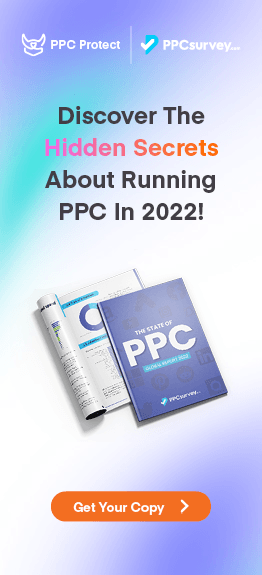Click fraud. No matter if you’re a PPC marketer or head of marketing, you’ve probably heard of the term mentioned by now.
Whether it was on the news or a blog, everyone has their opinion on the matter. With some people calling it the biggest threat to digital marketing while others tell you not to worry about it, who should you believe?
To help you debunk fact from fiction, we’re looking at 6 of the most common click fraud myths out there.
The chances are you’ve already heard some of these myths before, but which ones did you blindly believe?
Let’s get things started with the first most common myth out there: thinking it won’t affect you.
1. It Doesn’t Affect My Ads
The first and most common myth that many pay per click users fall for is the myth that click fraud doesn’t affect them. Just because you can’t see any inconsistencies in your data doesn’t mean that you aren’t the victim of click fraud.
There are thousands of malicious bots and unethical competitors out there looking to waste your budget at any given moment.
Without the right tracking and click fraud monitoring software, it’s almost impossible to track who’s clicked your ads. Since networks such as Google Ads don’t record individual user IP addresses, there’s no way to track how many fraudulent clicks you are getting.
Just because you can’t work out the number of fraudulent clicks on your ads doesn’t mean that you’re immune to click fraud.
2. Google Stops Fraudulent Clicks Anyway
It’s easy to think that with such a massive problem in the industry, PPC networks such as Google would be tackling the problem. Unfortunately, that’s not the case.
Although Google does have an invalid click department, they don’t actually stop the fraud in real-time. Instead, if you’re lucky and you prove to them you’ve been the victim of fraud, then they might give you a refund.
The problem with Google’s anti-fraud department is mainly down to trust. How can you tell if they are charging you for a fraudulent click or not? You can’t, you just have to take their word for it. Since Google determines which clicks you are charged for and which you are refunded for, they ultimately have the final say on what is classed as fraudulent.
The same goes for when they charge you money every time someone clicks on your ad. How do you know if the user was genuine or a robot? You don’t; you just have to take their word for it.
Considering Google makes 90%+ of their revenue from paid search, it’s in their interest to tell you the clicks are genuine. Without verifying the clicks yourself, you’ll just have to believe Google is telling the truth. As you can see, there is a clear conflict of interest.
3. It’s Not A Big Problem
If you don’t think you’ve been affected by click fraud in the past, then you probably don’t think it’s a big problem. After all, if you haven’t been affected, then what is there to worry about?
The truth is that almost nobody is immune from click fraud. No matter if you’re a local business or multi-billion dollar company. If you run ads on pay per click networks like Google Ads, then you’re at risk of experiencing fraudulent clicks. With so many different people out there waiting to click on your ads, the problem is bigger than ever.
To put things into perspective for you, according to research from Pixalate, the current global click fraud rate is 1 in every 4 clicks. And from our latest first hand Global Click Fraud Study data, we found that only 13% of advertisers saw little to no fraud. So there’s a good chance you and your ads are in the vulnerable 87%.
If you thought click fraud isn’t a big deal, then think again.
4. I Can Block Click Fraud Myself
Users who understand the risks and problems of click fraud will usually try to block fraudulent clicks themselves. But even for the most tech-savvy users, this poses an almost impossible task.
Since Google doesn’t give out any identifiable information (such as IP addresses) about users who have clicked your ads, it makes it incredibly hard to work out if they’re genuine or not.
One of the ways many users try to do this is by checking their server logs to see who has connected to their server. The first problem with this is identifying whether the user came to your website via a search engine, direct visit, or paid ad.
Without having some kind of tracking in place, it’s almost impossible to distinguish organic visitors from paid visitors.
Even if you could view all the users that came from your paid ads, how would you work out if they’re robots, and accurately? Banning a single wrong IP address such as a library or office could potentially stop thousands of people from seeing your ads.
To make things even worse, many fraudulent bots use rotating IPs to change their footprint.
If you wanted to keep up to date with the robots, then you’d have to update your exclusions list regularly. Not only is this very time-consuming, but the chances are you wouldn’t be able to keep up. Who’s going to spend 5 hours a day updating their IP exclusion list when they already have 10 ad campaigns to manage?
Don’t fool yourself into thinking you can block click fraud entirely on your own. It’s an incredibly time consuming process and there’s a high chance you’ll do more damage than good.
5. Click Fraud Prevention Software Is Too Expensive
The only way to securely protect your ads from fraudulent clicks is to use click fraud prevention software such as Lunio. However, for some users, just the thought of paying money for a click fraud protection service is too expensive.
“I’m already paying for ads so why should I pay for additional software?” you may ask.
Well, the truth is that many companies and businesses pay for 3rd party PPC services and tools all of the time. Unfortunately, the Google Ads platform doesn’t do everything that everyone wants, and it certainly doesn’t block click fraud, as well as people would like.
This means you basically have two options: carry on experiencing click fraud and wasting your money, or buy some software and do something about it. When you could be potentially losing hundreds or thousands of dollars every month to fraudulent clicks, paying a fraction of that to stop it makes perfect business sense.
And who wants to spend several hours a day updating their exclusions list when it can just be automated?
To prove click fraud prevention software is worth it, we’ll even give you a 14-day free trial to make sure you save money from your ads.
6. My Campaigns Are Too Small
No matter how big or small your PPC campaign is, no one is immune from the threat of click fraud. Although having a smaller campaign and budget does decrease your chances of experiencing click fraud, it certainly doesn’t make you immune.
All it takes is for one of your competitors to see your ad, and they’re almost guaranteed to give it a click. So whether you’re a local plumber, carpenter, or small business, all it takes is one click and you could be out of pocket.
With cost per clicks ranging from a few cents to tens of dollars, one-click might not sound like a big deal. However, what about when they click your ads every day? Your losses can quickly add up to hundreds if not thousands of dollars.
Many people think that fraudsters won’t bother with a small ad campaign, but the truth is they’ll click every ad they can see. No matter how big your campaign is or how much you are spending per click, every PPC campaign is at risk of experiencing click fraud.
Stop Ignoring The Problem
Hopefully by now, you can see just how big of a problem click fraud is. No matter the size of your company or ads, click fraud can affect anyone without you even realizing it.
To show you how much of a problem click fraud is, we’re offering everyone a 14-day free trial to our industry leading click fraud prevention software.
With all features and protection included, you can see how much click fraud your campaigns and ads are exposed to from day one. We’ll also help you automatically block future fraud and request a refund from Google.
To get started sign up for your free 14-day free trial.




